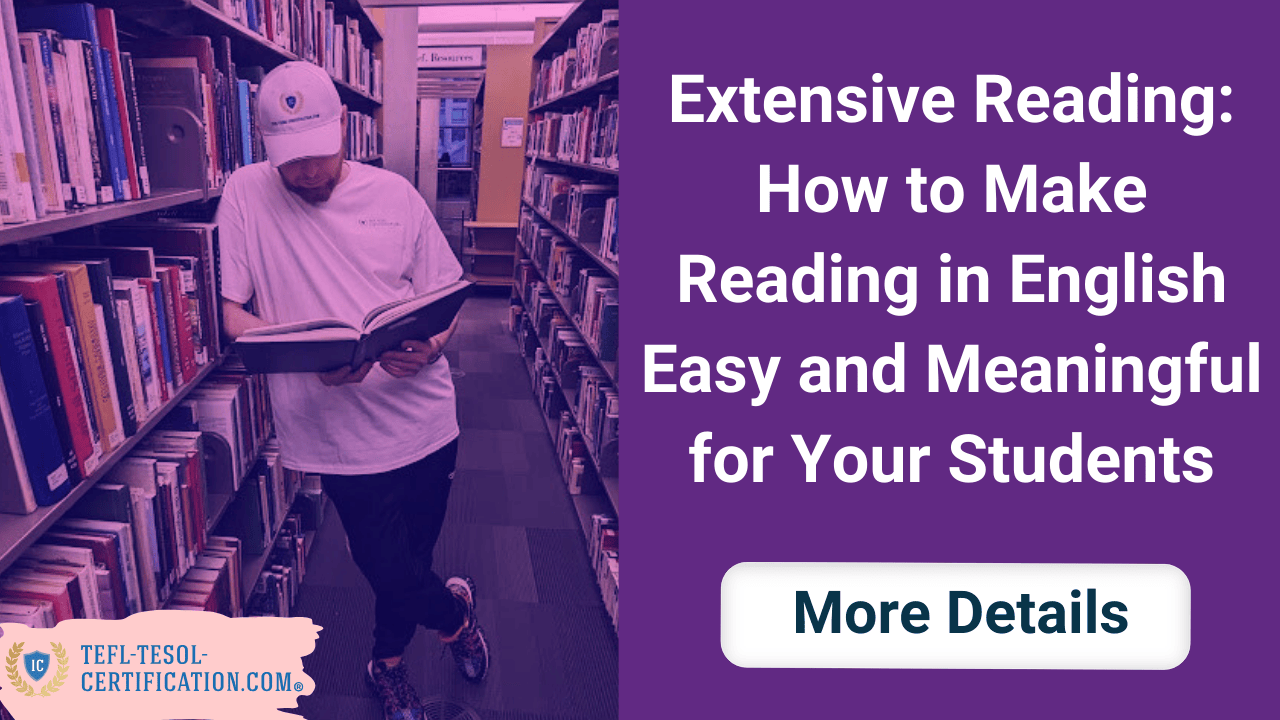And start earning money 💸 by teaching English in your own country, abroad, or online from anywhere on the planet! 🎁 Gifts and bonuses: professional support from your personal coach 🧑🏫 and job placement assistant 💼.

Using Language Corpora in English Language Teaching: Practical Data-Driven Learning for English Teachers
Table of contents
- Why every English teacher should use language corpora
- Language corpora for ELT: choosing and adapting
- Using a corpus in class: three practical scenarios
- Corpus techniques for grammar practice
- DDL: steps and practical tips
- Mini case studies: corpus work across levels
- TEFL/TESOL and career: adding corpus work to your teaching portfolio
- Technical setup and corpus ethics
- Four-week implementation plan (micro sprint)
- Quick FAQs about language corpora in ELT
- Conclusion: small steps, big discoveries
Have you ever caught yourself thinking, “Where can I quickly check how native speakers actually say and write this?” I do — all the time. Literal word-for-word translation rarely works in real communication; knowing how expressions are actually used matters. That’s why I rely on language corpora and the Data-Driven Learning (DDL) approach. In this article I’ll show how to use a corpus in your English lesson so students start to feel the language, notice patterns, and — most importantly — begin to think in English.
Why every English teacher should use language corpora
Picture this: it’s Friday evening, you’re finishing a student essay with a cup of tea, and you spot “however, although, nevertheless” piled into one sentence and a casual “kind of” standing next to a formal “moreover.” Tomorrow in class I’ll bring authentic corpus examples and we’ll see how native speakers actually frame those ideas. A corpus is a large, verifiable database of texts and transcripts where each word is shown in real contexts — news, podcasts, books, forum posts. As an ELT practitioner, I use corpora to:
- Measure frequency: see what is actually used, not what seems right.
- Reveal collocations: discover which words typically appear together.
- Provide concordances (KWIC): the keyword in context with left and right context.
- Resolve debates: use data rather than intuition to answer “Is this correct?”
Student: “York, is despite of acceptable?” Me: “Let’s check the corpus.” A few clicks and we see that despite without of is the pattern. The classroom becomes a lab, not an opinion match. Isn’t that the kind of lesson we want?
What a corpus is — in simple terms
A corpus is a curated collection of texts annotated by linguists. Each snippet can include metadata: genre, date, author, region. We pull statistically meaningful patterns, not random quotes. It’s fast: two clicks and you have collocation drills, an essay skeleton, or a grammar hypothesis test ready for class.
Language corpora for ELT: choosing and adapting
Over 12+ years of teaching I’ve tried many corpora. For ELT I filter corpora by three practical criteria: transparent sources, powerful search (frequency, filters, KWIC), and exportable examples. Some corpora focus on academic writing, others on spoken interaction or global English. Match the corpus to your lesson aim: speaking, writing, or a corpus for grammar practice.
- Goal → Corpus: writing? use an academic discourse corpus. Speaking? choose a conversational corpus.
- Filters: year, region, genre — to align examples with your target norm.
- Tools: frequency lists, collocations, n-grams — my quick task builder. 💡
How I adapt by level: for pre-intermediate I shorten contexts and highlight the keyword; for upper-intermediate I keep “rough edges” — rarer collocations and stylistic shifts. Always add a tiny opening prompt — a question students answer by looking at the data.
💡 Unlock the secrets to doubling your teaching income with our exclusive checklist! 🎯 This checklist is designed for English teachers who want to 📈 attract more students and 🔥 keep them engaged for the long term.
Picking examples without the noise
- Cut overly long fragments — they drain attention.
- Limit by date: use examples from the last 10–15 years so language sounds current.
- Check genre: blog, academic article, dialogue — each has its rhythm and lexis.
- Tag by level: A2, B1, B2 — saves time during the lesson. 😊
Next: how to use a corpus in class without overload or “elite” magic.
Using a corpus in class: three practical scenarios
I like lessons that feel like corridor chats before class: short lines, laughs, and a pencil tapping the table. These are my go-to scenarios, adaptable for adults and teens.
Scenario 1: Vocabulary & collocations (5–10 minutes)
- Give a KWIC card with 10 concordance lines for the word impact.
- Ask students to spot 5 frequent patterns: have a major impact, negative impact on, impact of, etc.
- Micro-dialogue: “Can we say big impact?” — “Maybe, but what does the corpus show?”
- Finish with a quick paraphrase task: replace “big” where corpus suggests “major / significant.” 🎯
Scenario 2: Post-writing feedback session (10 minutes)
- Collect common errors from the group: articles, word order, prepositions.
- Each error becomes a mini grammar corpus: 6–8 lines showing the correct pattern.
- Students formulate the rule themselves: “After despite use a noun or gerund.” You confirm.
- Final task: students fix their fragment applying the rule.
Scenario 3: Spoken practice (7–12 minutes)
- Extract natural phrases for making suggestions: Why don’t we…, How about…, We could…
- Give a dialogue scaffold: Student A proposes; Student B asks two follow-ups drawn from corpus patterns.
- Pause to reflect: what sounded natural? what felt too written?
- Homework: collect 5 new spoken turns from a corpus and bring them to the next class.
Notice the pattern: students discover rules; we guide. That’s the heart of data-driven learning (DDL).
🚀 More students, 💰 higher income, 🌍 complete freedom! ✅ 112 verified platforms with top rates ⏳ Flexible schedule – work whenever and as much as you want 🎯 Simple requirements – start earning right away 💎 Boost your career and income by teaching students worldwide!
Corpus techniques for grammar practice
I respect grammar but avoid dry tables. A corpus breathes life into even article use. Start from a hypothesis — “Is the indefinite article always needed before professions?” — then test it in the corpus and give a rewriting task.
- Articles: compare in hospital vs in the hospital — when is the zero article used?
- Tenses: check how often the present perfect appears with markers like so far, recently.
- Prepositions: does discuss about occur? Corpus data settles myths.
- Word order: is inversion in conditionals common? Let’s check.
| Structure | Contrast | Task |
|---|---|---|
| used to vs would | Describing past habits | Find 6 lines, sort by function, write a mini-story |
| the number of vs a number of | Singular vs plural agreement | Correct 5 student sentences |
| despite vs in spite of | Register and frequency | Create a mini-poster with example stickers |
“Isn’t this too academic for younger learners?” Not if you present it in bite-size actions. Students love it when their intuition matches the data: “We’re like linguists!” they say, smiling.
DDL: steps and practical tips
The approach is simple — like a cookie recipe — but consistently effective. I learned it on a TESOL course and never looked back. Here's my classroom algorithm with small hacks.
- Ask a question. Not “learn the rule,” but “where does used to usually occur?”
- Collect data. 20–40 KWIC lines, filtered by genre/ register.
- Give the lens. Highlight collocations, forms, left/right neighbors.
- Ask for the conclusion. Students write the rule in one or two lines.
- Apply. Rewrite a student paragraph, replacing weak phrases with frequent ones.
- Record. Make a memory map and 3 quick follow-up tasks. 🚀
- 💡 Pro tip: keep a “bank of examples” — 10–15 top concordance lines per topic. Saves hours.
- 💡 Pro tip: alternate “blind” and “highlighted” samples to avoid cognitive overload.
- 💡 Pro tip: let students test their own hypotheses — “Can we say this?” — using the corpus instead of authority.
Mini case studies: corpus work across levels
Concrete stories are my favorite. Here are three recent classroom wins — marker smell on the board, papers rustling — small discoveries that change habits.
Case 1: A2 — articles without boredom
- Problem: students confuse articles with professions.
- Method: 12 KWIC lines with the pattern be + a/an + job, plus 3 news exceptions.
- Finding: “She is a teacher” is standard; “She is teacher” is a rare error.
- Practice: rewrite 6 sentences from mini-essays and create a photo tip card.
Case 2: B1 — collocations for essays
- Problem: weak linkers make introductions sag.
- Method: frequency list for challenge: face a challenge, overcome, pose, address.
- Finding: replace “big challenge” with “major / significant” for a more mature style.
- Practice: build a starter “fishbone” for introductions — 5 collocations + 2 corpus examples.
Case 3: B2 — pragmatic phrasing in dialogues
- Problem: spoken turns sound too blunt.
- Method: compare frequency of Why don’t we… vs Shall we… in a spoken corpus.
- Finding: Shall we… is slightly more formal; We could… softens suggestions.
- Practice: role pairs where A suggests and B mitigates — only using corpus phrases.
Outcome: fewer random mistakes, more stylistic confidence, and a trained ear. That’s the practical payoff of corpora: they tune the learner’s ear to natural English.
TEFL/TESOL and career: adding corpus work to your teaching portfolio
For my TESOL certification I compiled a DDL portfolio: tasks, student mini-research, collocation checklists. Employers notice: you’re not just explaining rules, you’re building lessons from contemporary data. To showcase this, prepare 2–3 cases with “before” (the error), corpus evidence, and “after” (the fix).
- Collect 2–3 lesson cases: error → corpus data → corrected output.
- Describe the method: how you used language corpora for ELT across reading, writing, and speaking.
- Include brief student feedback: “We didn’t argue — we checked.” 😊
Technical setup and corpus ethics
When I open a corpus in class, logistics matter: screen visibility, a clear timer, and lesson rhythm. I always state classroom rules: don’t copy long extracts without attribution, mark spoken vs academic registers, and be honest — if something sounds odd, we bring the data and check it together.
- Privacy: anonymize examples taken from student work.
- Currency: re-check patterns every 6 months — language evolves.
- Accessibility: choose line length and font size so context is visible without scrolling.
- Inclusivity: consider regional variants — British, American, or Global English.
Four-week implementation plan (micro sprint)
Want a low-stress start? Try a four-week sprint and gradually build complexity.
- Week 1. Introduce the corpus: 5 minutes at the end of class, 10 lines, one hypothesis.
- Week 2. Collocations: build a “fish” for writing — intro/conclusion collocations.
- Week 3. Grammar: compare two patterns and rewrite a paragraph.
- Week 4. Mini-research: each pair brings 10 examples and draws conclusions. 🎯
- Weekly reflection: what worked? what was hard? what to drop/add?
- Result: one golden collocation sheet per topic and a checklist for testing hypotheses.
Quick FAQs about language corpora in ELT
- Is it only for advanced learners? No — start at A2 with short lines and one guiding question.
- Won’t it take too much class time? Use a 7–10 minute timer — it actually saves time in the long run.
- Will it kill creativity? Quite the opposite: creativity thrives on accuracy. Data creates the stage for improvisation.
- What if I don’t have many resources? Build a mini-corpus from course texts and student work.
Conclusion: small steps, big discoveries
A corpus is not “another platform” — it’s a way to see English as it really is. I’m York Fern, and I still get surprised by what ten KWIC lines can reveal. Start small: one question, one corpus, one conclusion. In a month your lesson plans will quietly carry language corpora and DDL — not as trendy phrases, but as reliable classroom practice. 🚀
Terms used:
EFL, ESL, TEFL, TESOL

York Fern
An English instructor with 12+ years of experience. I work for an online school and travel the world, teaching students from various countries, leveraging my TEFL/TESOL certification. Seeing the world's oceans, mountains, and cities with my own eyes has given me a profound appreciation for the importance of quality education and international communication.
and start earning by teaching English in your country, abroad, or online from anywhere in the world! Order the course with a 50% discount 💸 and receive as a gift the support of a personal coach 👨🏫 and job placement assistant! 🎁🚀 Hurry, limited spots available! 🏃♂️💨
💡 Unlock the secrets to doubling your teaching income with our exclusive checklist! 🎯 This checklist is designed for English teachers who want to 📈 attract more students and 🔥 keep them engaged for the long term.
🚀 More students, 💰 higher income, 🌍 complete freedom! ✅ 112 verified platforms with top rates ⏳ Flexible schedule – work whenever and as much as you want 🎯 Simple requirements – start earning right away 💎 Boost your career and income by teaching students worldwide!
choose us?



